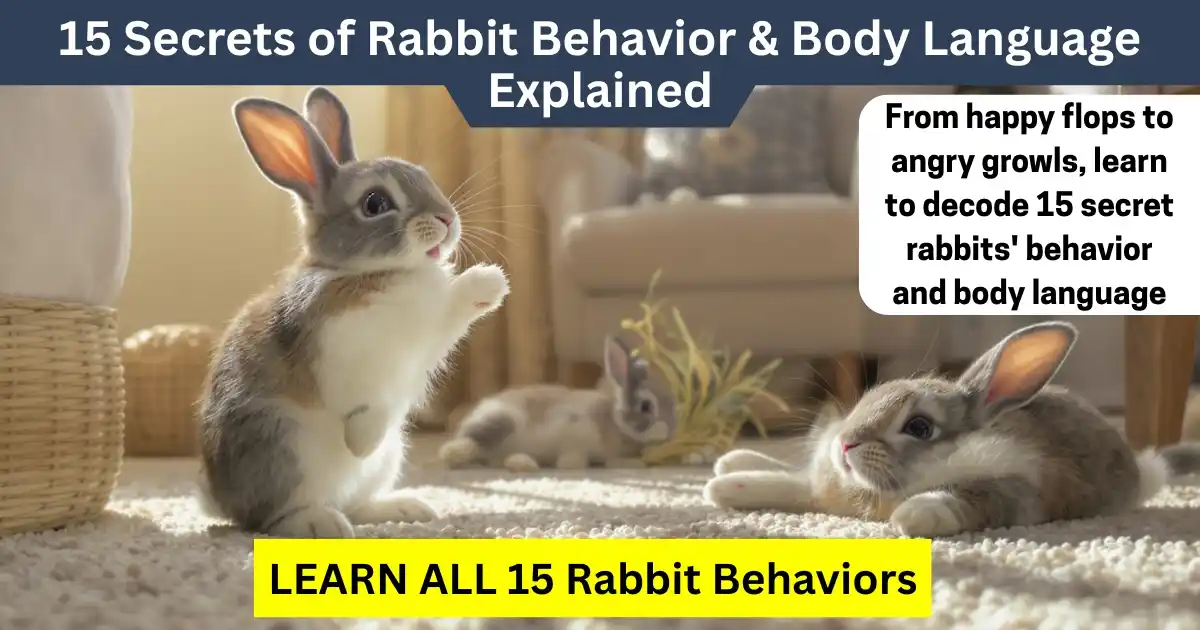Unlock the secrets of your bunny’s actions! We decode 15 rabbit behaviors—from thumping and binkies to nipping and flopping—so you can understand their unique body language.
Rabbit behavior is one of the most important things every bunny owner should understand. Your pet talks to you. It uses its body and the sounds it makes. Watch and learn these signs. You will grow closer to your furry friend.
Understanding bunny behavior prevents accidents and ensures proper care. The AVMA emphasizes that rabbits need specific environments to thrive. Watch your bunny’s signs. The U.S. government says to look for stress in pet rabbits.
Your rabbit talks with its ears, body, and sounds. Each move has a meaning. It shows a mood or a need. If you see these signs, you can keep your bunny happy and well. Missing these cues can lead to health problems or behavioral issues.
This guide covers 15 essential rabbit behaviors, including common concerns like bunny biting, rabbit aggression, and rabbit nesting behavior. You’ll learn to decode everything from happy binkies to warning thumps. Let’s explore what your bunny is really trying to tell you.
15 Rabbit Behaviors Every Owner Must Know
1. Thumping – Your Rabbit’s Alarm System
Thumping is how rabbits warn about danger. Your bunny stamps their hind leg hard against the ground. This creates a loud thump that alerts other rabbits nearby.

A wild rabbit thumps to warn of danger. Your pet rabbit will thump too. It thumps when it is scared or mad. Loud sounds, new smells, or fast moves can cause a thump.
If your rabbit thumps frequently, check their environment. Remove scary objects or sounds. Some rabbits thump at night when they hear outdoor animals. Moving their cage away from windows often helps. Californian rabbit behavior includes more frequent thumping compared to other breeds. These rabbits are naturally more alert and vigilant.
2. Rabbit Aggression & Growling – Understanding the Warning Signs
Rabbit aggression appears as lunging, boxing, or biting. Growling sounds like a low humming or grunting noise. These behaviors mean your rabbit feels threatened or territorial.
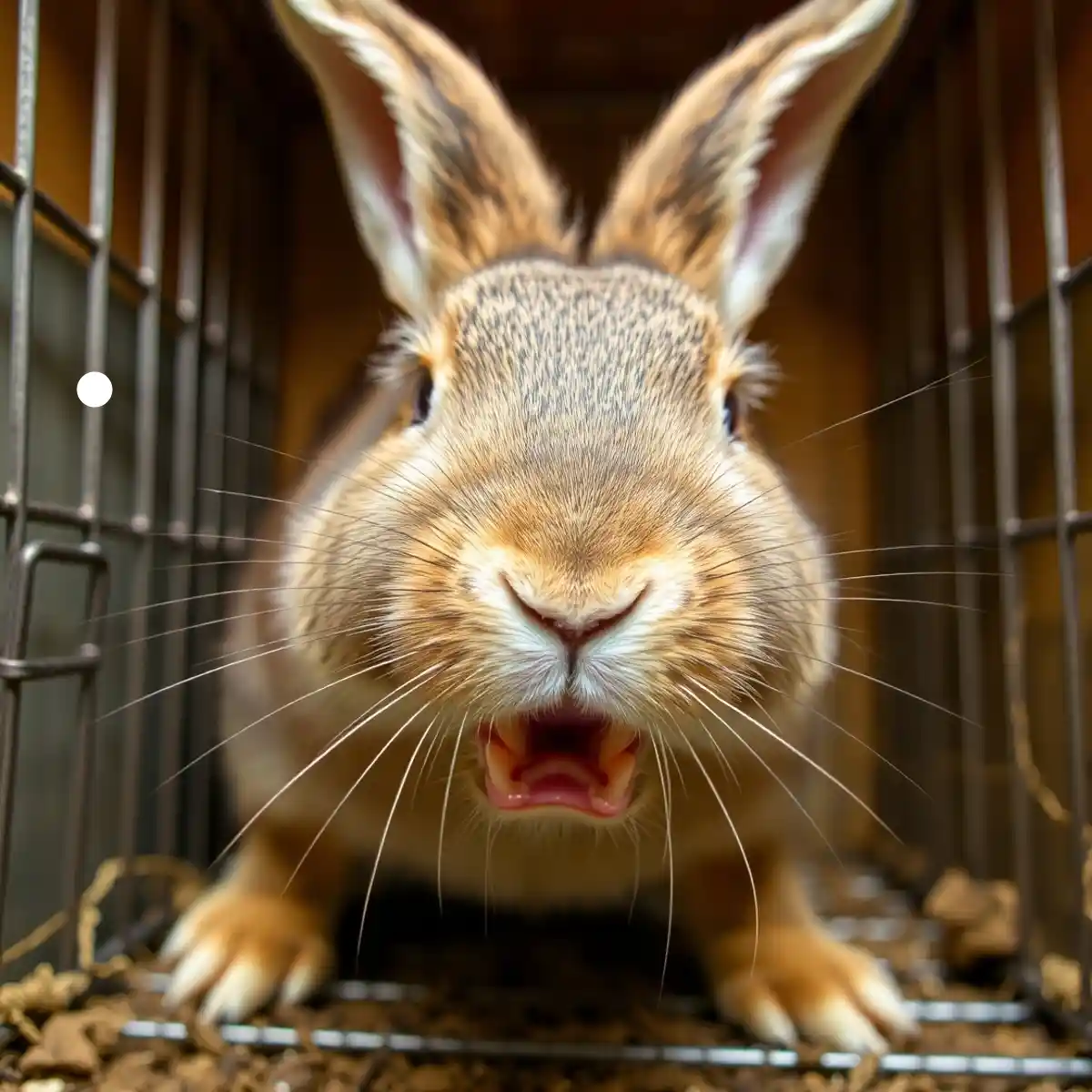
Hormones cause the most aggressive bunny rabbit behavior. Unspayed females become territorial around four months old. Males spray urine and fight for dominance. Stress from small cages or loud environments also triggers aggression.
Fix rabbit growling by identifying the cause. Spay or neuter your rabbit by six months. Give them more space and hiding spots. Never punish aggressive rabbits as this increases fear. Instead, speak softly and move slowly around them. Most aggression disappears after fixing hormonal issues.
3. Bunny Biting & Nipping – Playful vs. Painful
Bunny nipping feels like a gentle pinch. It’s how rabbits groom each other. Your rabbit might nip to say “move over” or “pet me.”

True bunny biting breaks skin and hurts. Aggressive bites happen when rabbits feel cornered. Fear, pain, or protecting territory causes hard bites. Young rabbits also bite while learning boundaries.
Tell the difference by watching body language. Happy nips come with relaxed ears. Aggressive bites include flat ears and tense bodies. Redirect nipping by offering toys instead. Never hit or yell at biting rabbits. This makes the problem worse. Train them with positive reinforcement and patience.
4. Bunny Biting Cage – Why Rabbits Attack Their Home
Bunny biting cage bars signals frustration or boredom. Your rabbit wants out to explore. Small cages make this behavior worse.

Rabbits need a minimum of 4×2 feet of living space. Anything smaller causes stress and rabbit biting cage problems. Some rabbits bite bars for attention. They learn that biting makes you come over.
Stop cage biting by upgrading their space. Add platforms and tunnels for enrichment. Give your rabbit 4+ hours of exercise daily. Provide chew toys to redirect the behavior. Cover problem areas with cardboard temporarily. Most importantly, ensure your rabbit isn’t bored or lonely.
5. Rabbits Mating Behavior – Circle Dances and Honking
Rabbits mating starts with circling behavior. Males run tight circles around females. They make honking sounds like tiny beeps. This courtship can last several minutes.
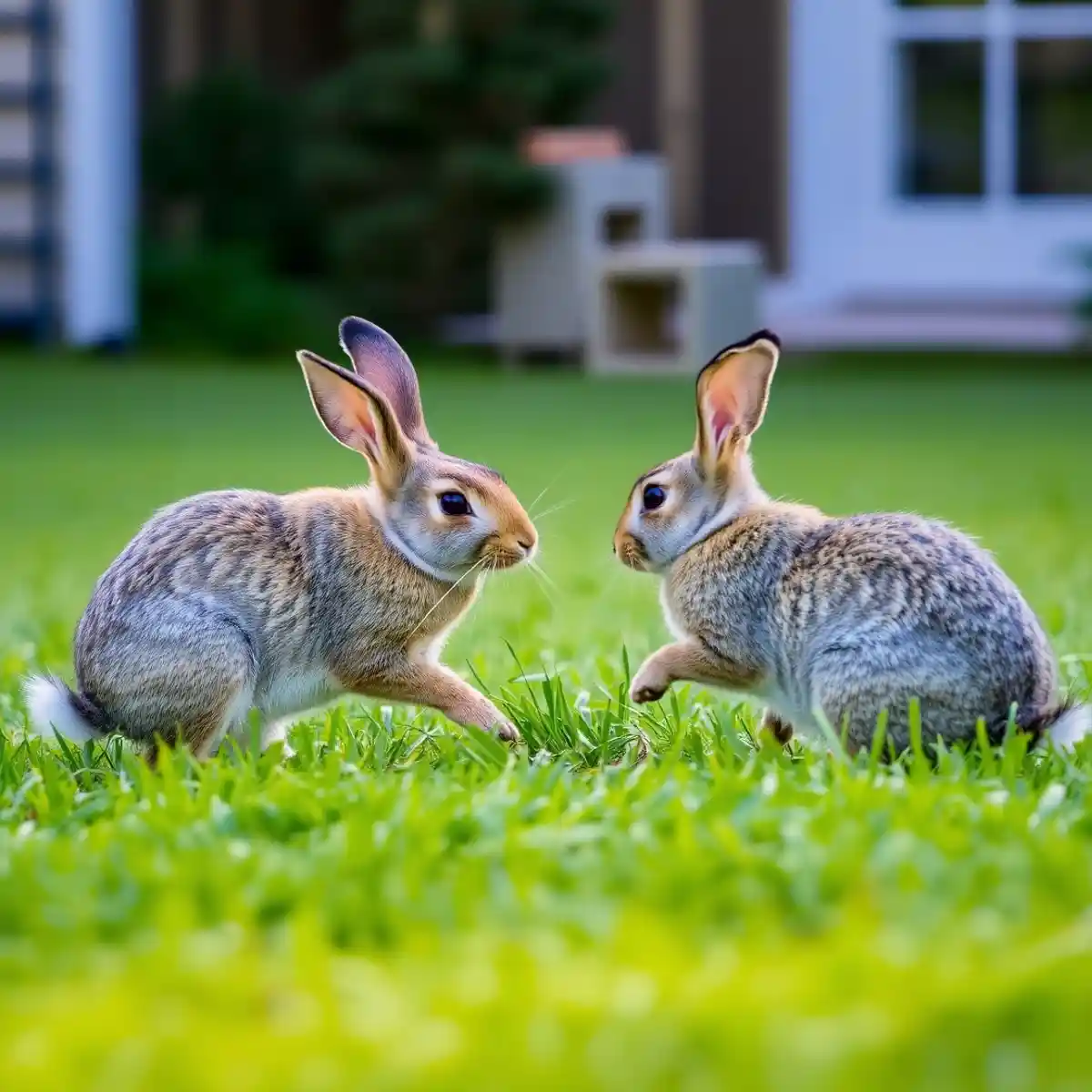
During rabbit mating behavior, males spray urine to mark territory. Females might mount males to show dominance first. Actual mating lasts only 30 seconds. The male falls sideways and might scream afterward.
Even fixed rabbits show mating behaviors sometimes. Spring triggers these hormonal displays most. Circling your feet means your rabbit sees you as a mate. Redirect this by offering toys or treats. Spaying and neutering reduce these behaviors by 90%.
6. Rabbit Nesting Behavior – Preparing for Babies
Rabbit nesting behavior includes pulling fur from their chest and belly. Pregnant does gather hay and arrange it carefully. They create warm beds for their babies.
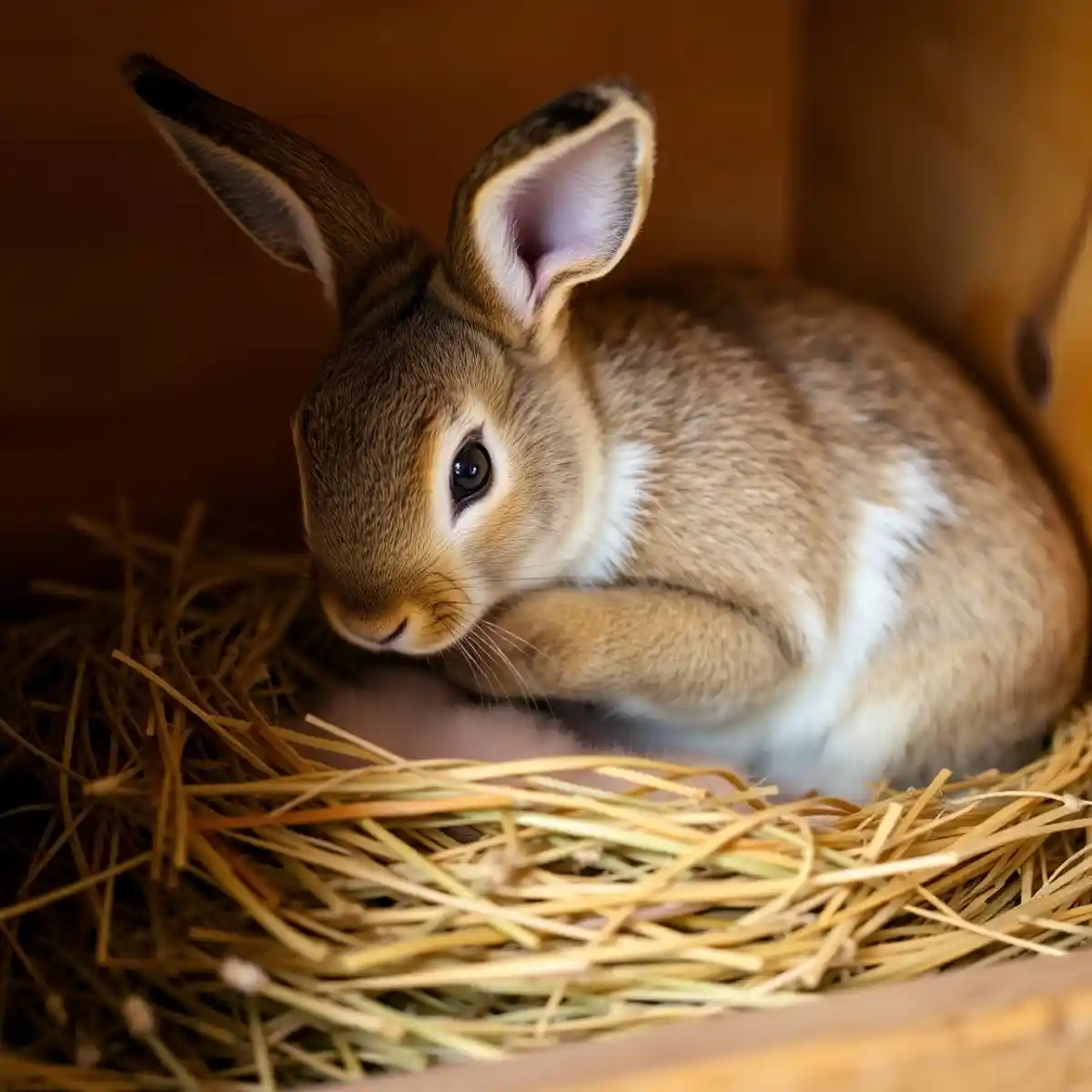
False pregnancies trigger bunny nesting behavior too. Unspayed females experience these monthly. They act pregnant without being bred. The nesting instinct lasts about 18 days.
You’ll see increased digging and territorial behavior. Does become protective of their nest area. Provide a nest box with soft hay. Let them complete the nesting process naturally. Spaying prevents false pregnancies and reduces stress. Contact your rabbit vet if nesting continues beyond three weeks.
7. Cat and Rabbit Mating Myths – Biological Impossibility
Cat and rabbit mating cannot produce offspring. These species have incompatible DNA structures. Cats have 38 chromosomes while rabbits have 44.
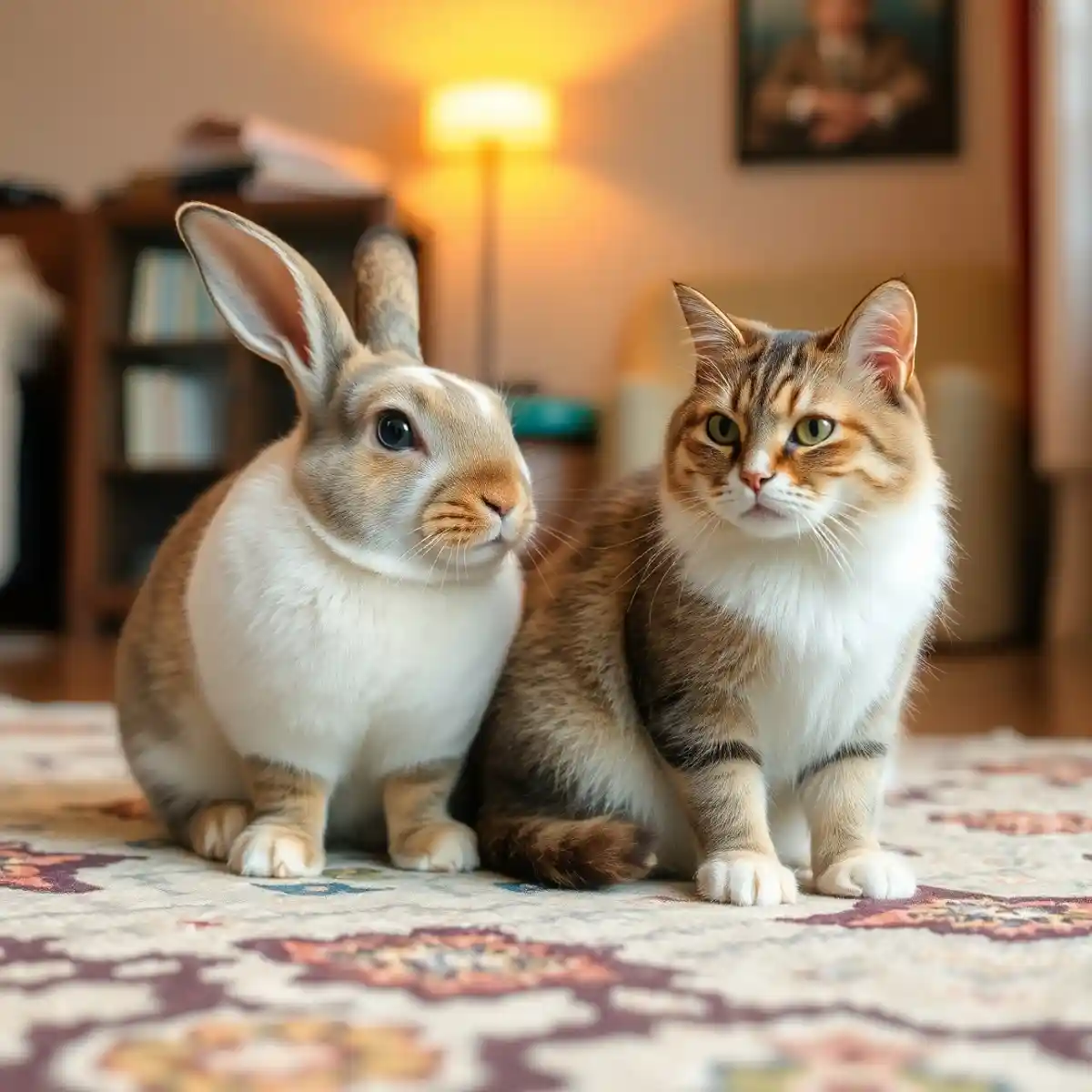
The myth started from rabbits’ cat-like grooming behaviors. Some rabbits and cats become friends. People misinterpret their play as mating attempts. Mounting behavior between species shows dominance, not reproduction.
Keep cats and rabbits apart. Do not leave them alone. Cats are hunters and can scare or harm a small rabbit. Let them meet in slow steps. This should take weeks. Look for signs of fear or anger. Successful cat-rabbit friendships require patience and proper introduction methods.
8. Bunny Chewing Everything – Natural Instinct Gone Wild
Bunny chewing everything stems from constantly growing teeth. Rabbits must chew to wear down their teeth. Without chewing, teeth overgrow and cause pain.
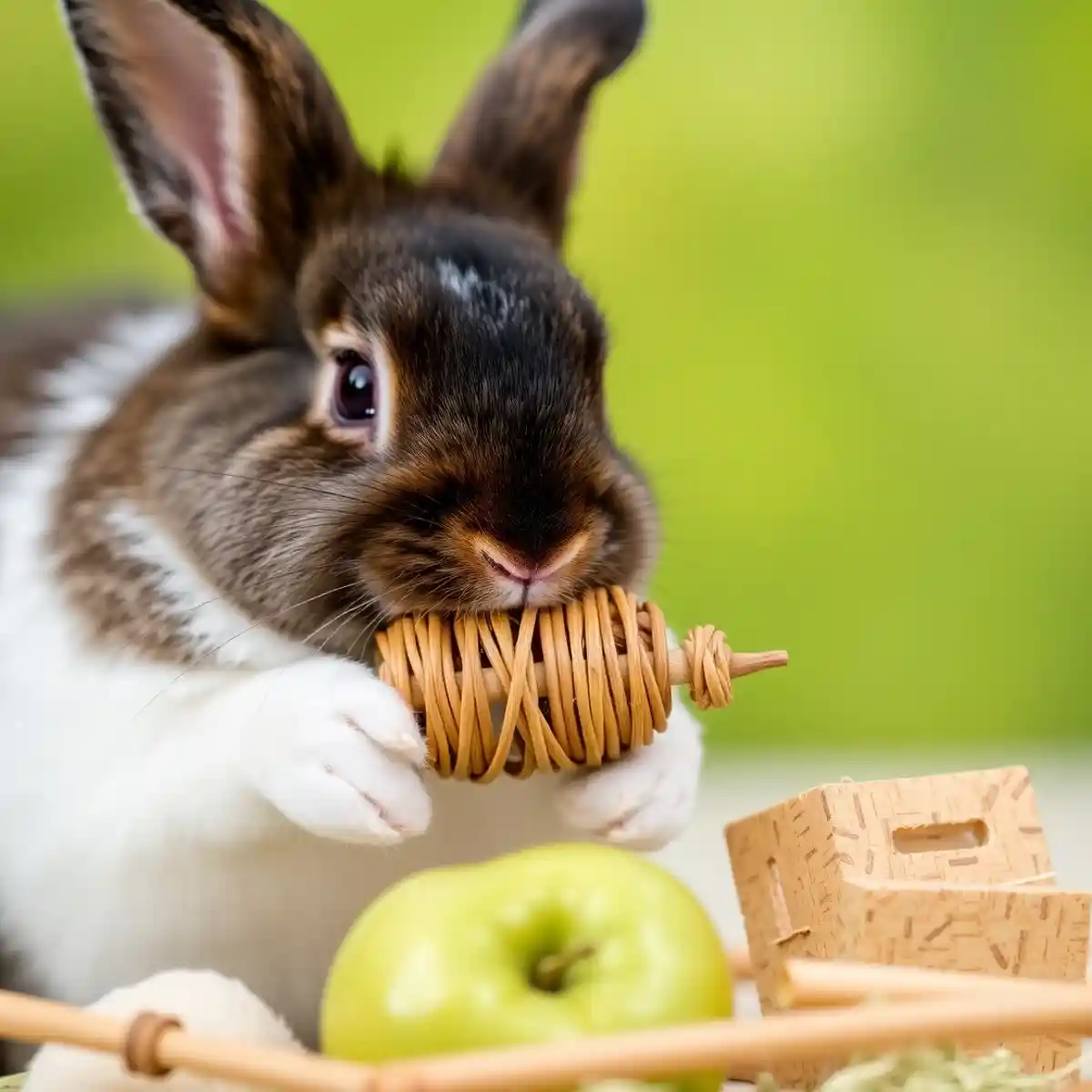
Boredom increases destructive chewing behaviors. Lonely rabbits chew furniture, baseboards, and carpets. Young rabbits chew more during teething phases. They explore their world through their mouths.
Protect your home by thoroughly rabbit-proofing. Cover wires with protective tubing. Block access to wooden furniture legs. Provide unlimited hay for healthy chewing. Offer apple wood sticks and willow balls. Rotate toys weekly to maintain interest. Most bunny chewing everything problems improve with proper outlets.
9. Lonely Rabbit Behavior – Signs of Depression
Lonely rabbit behavior includes excessive hiding and decreased appetite. Single rabbits often overgroom themselves. They might pull out fur or chew their own fur.
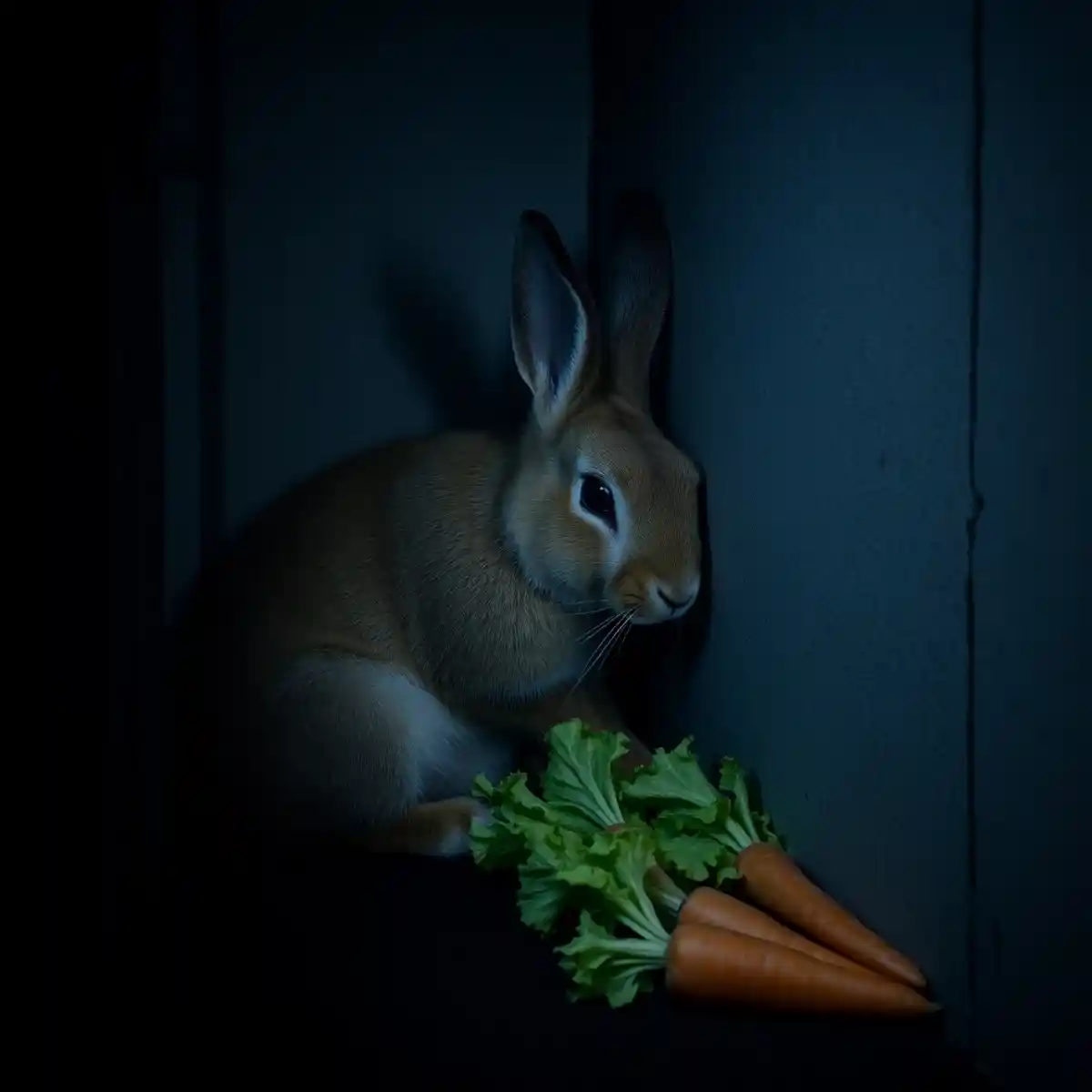
Rabbits are social animals needing companionship. Without friends, they develop depression symptoms. Lonely rabbits sleep more and play less. They lose interest in treats and toys.
Fix lonely rabbit behavior by getting a second rabbit. Bonded pairs live happier, longer lives. If another rabbit isn’t possible, spend 4+ hours daily with them. Place their enclosure where family activities happen. Some rabbits bond with cats or calm dogs. Monitor these relationships carefully for safety.
Many think rabbits like to be alone. This is not true. Rabbits are very social. They often need a friend to be happy and healthy. This is just one of many wrong ideas about rabbits. Read our guide to learn the top 15 common rabbit myths.
10. Licking and Grooming – Bunny Kisses
Licking shows affection in rabbit language. Your bunny grooms you like another rabbit. This behavior means they accept you as family.

Mutual grooming strengthens rabbit relationships. Dominant rabbits demand grooming from others. They’ll push their head under your hand. Some rabbits lick furniture or blankets with your scent.
Encourage grooming by petting your rabbit’s forehead. Return their affection with gentle strokes. Never pull away from rabbit kisses. This might hurt their feelings. Some rabbits groom more than others naturally. Lionhead rabbit behavior includes extra grooming due to their long fur.
11. Binky Jumps – Pure Rabbit Joy
Binkies are jumping twists showing pure happiness. Your rabbit leaps and kicks sideways mid-air. Young rabbits binky more than older ones.

This joyful bunny rabbit behavior happens during play. Morning and evening bring most binkies. Rabbits binky when released for exercise time. Fresh vegetables or favorite treats trigger binkies too.
Create binky-friendly spaces with running room. Clear obstacles that might cause injuries. Soft rugs prevent slipping during enthusiastic jumps. Play with your rabbit to encourage binkies. Toss toys or run with them. Happy rabbits binky daily. Missing binkies might indicate health problems.
12. Flopping Over – Ultimate Trust Signal
Flopping means your rabbit feels completely safe. They throw themselves sideways dramatically. New owners often panic, thinking something’s wrong.
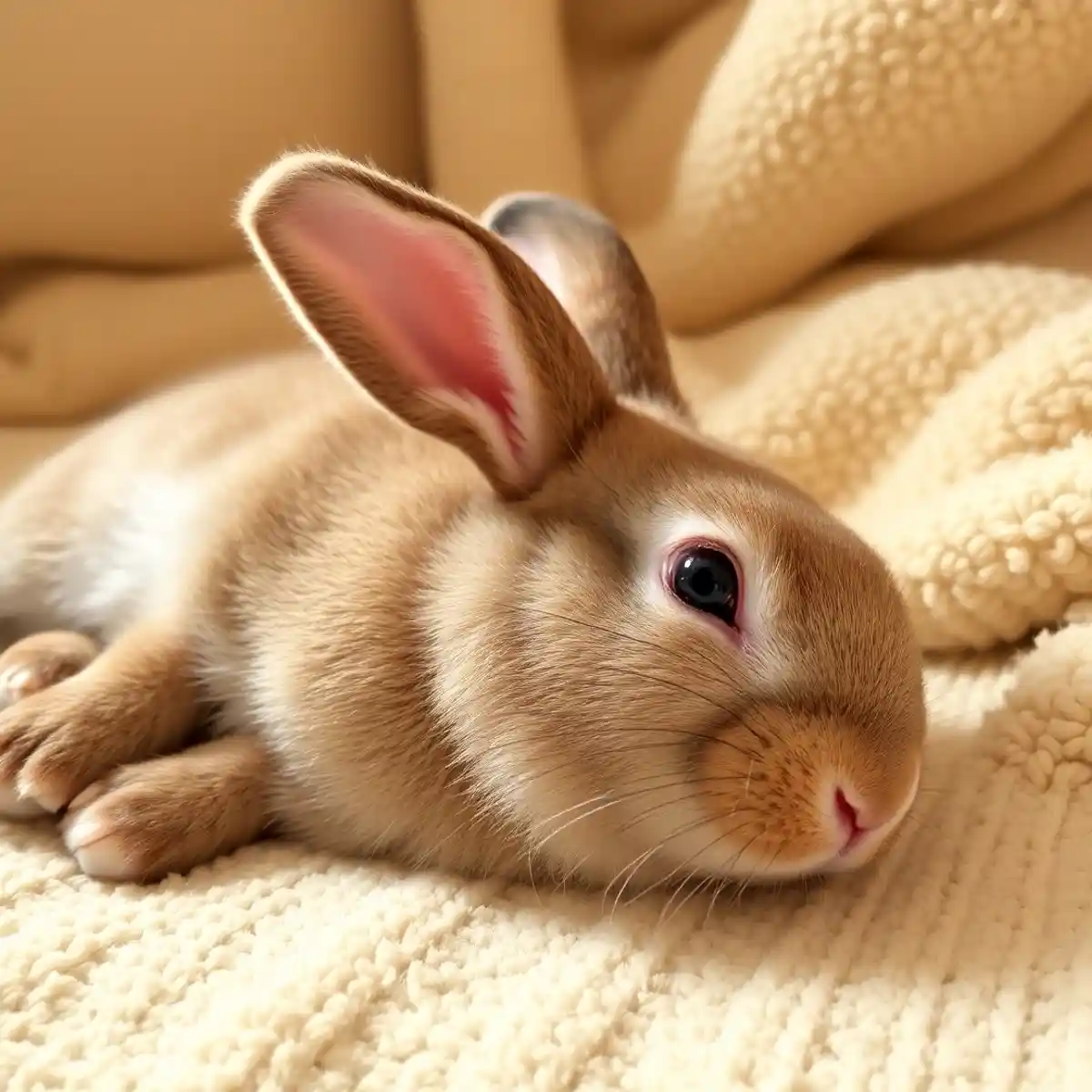
This relaxed position exposes their vulnerable belly. Wild rabbits never flop near predators. Pet rabbits only flop around trusted humans. The behavior shows contentment and comfort.
Encourage flopping by creating calm environments. Sit quietly near your rabbit. Let them approach you first. Never disturb a flopped rabbit suddenly. They need time to right themselves. Some rabbits flop multiple times daily. Others rarely show this trusting behavior. Each rabbit has unique comfort levels.
13. Hormonal Rabbit Behavior – Teenage Bunny Problems
Hormonal rabbit behavior starts around 3-4 months old. Males spray urine on walls and furniture. Females become territorial and aggressive. Both sexes mount objects or other pets.
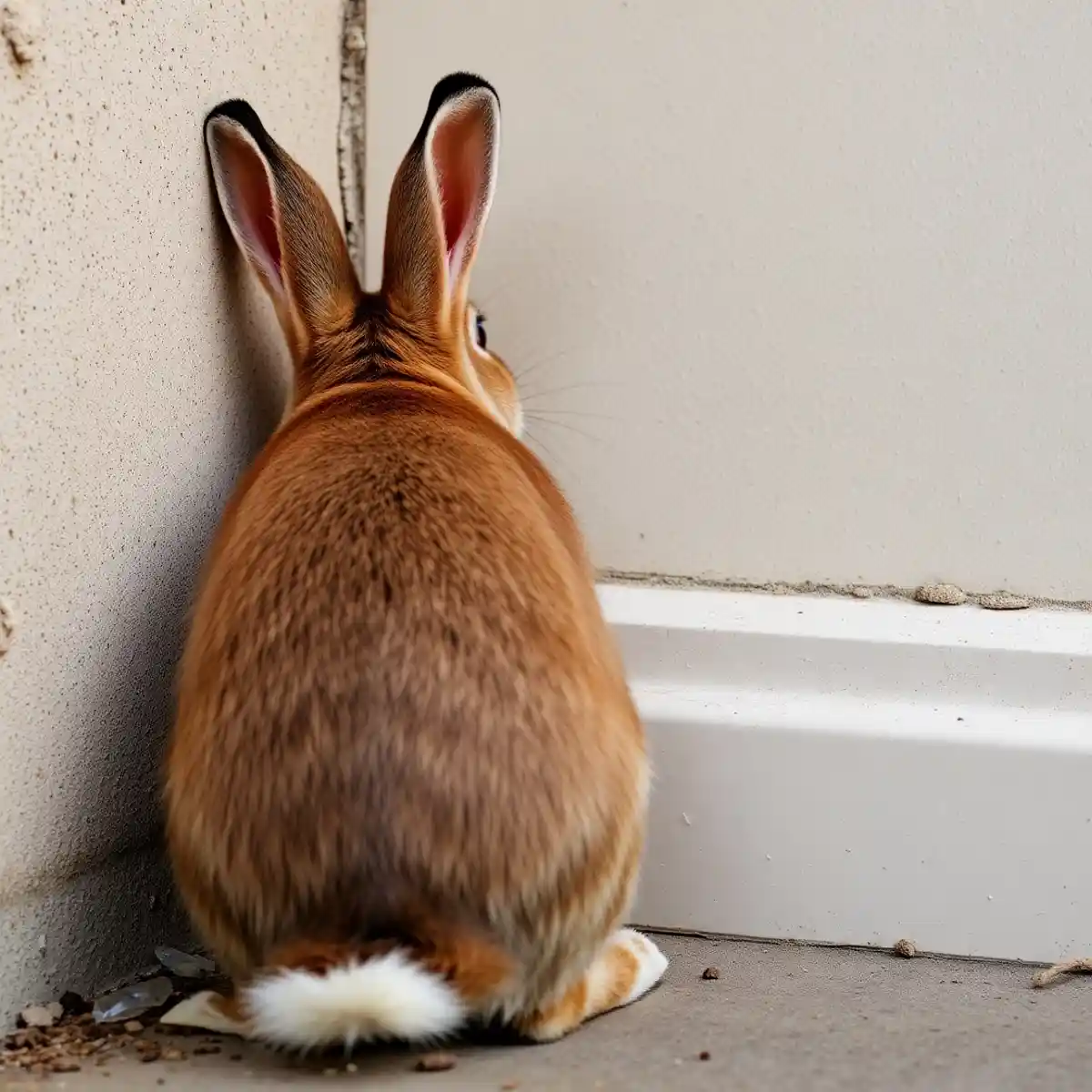
Unfixed rabbits circle your feet constantly. They grunt, honk, and nip for attention. Hormonal females experience false pregnancies monthly. Males fight other rabbits viciously. These behaviors stress both rabbits and owners.
Spaying or neutering solves hormonal rabbit behavior completely. Surgery is safe after 4-6 months old. Fixed rabbits live longer, healthier lives. They’re calmer and easier to litter train. Most aggressive behaviors disappear within weeks after surgery.
14. Breed-Specific Behaviors – Lionhead vs. Californian
Lionhead rabbit behavior tends toward friendliness and curiosity. These small rabbits love human interaction. They require daily grooming for their mane. Lionheads are perfect apartment pets due to their calm nature.

Californian rabbit behavior shows more independence. These larger rabbits need extra space. They’re excellent jumpers and escape artists. Californians tolerate handling less than smaller breeds. They prefer observing from a distance initially.
Mixed breeds combine various behavioral traits. Research your rabbit’s breed mix for insights. Remember that individual personality matters most. Some Californians are cuddly, while some Lionheads stay aloof. Spend time learning your specific rabbit’s preferences.
15. Digging – Ancient Rabbit Instinct
Digging is a natural rabbit behavior from wild ancestors. Rabbits dig burrows for safety and comfort. Pet rabbits dig in litter boxes, carpets, and couches.
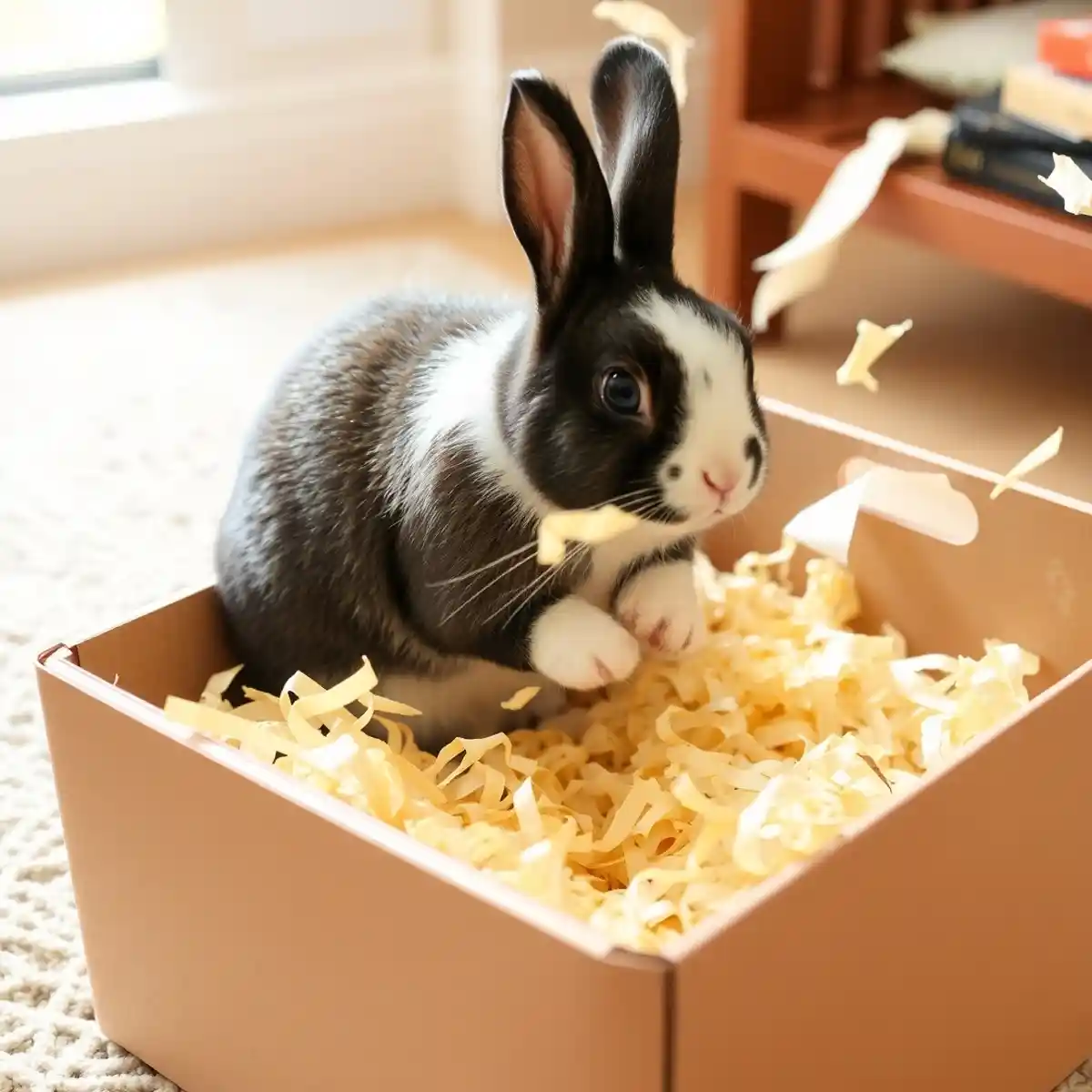
Female rabbits dig more than males typically. Pregnant does dig frantically before giving birth. Bored rabbits dig to entertain themselves. Some dig when frustrated or stressed.
Let your rabbit dig. Give it a good place to dig. Use a box. Fill it with strips of paper. Or, use a box with clean, soft sand for kids. This makes a fun dig spot. Hide treats in dig boxes for enrichment. Protect carpets with grass mats or tiles. Never punish digging as it’s instinctive behavior.
Comparison Tables
Table 1: Playful vs Aggressive Bunny Biting
| Symptom | Cause | Fix |
|---|---|---|
| Gentle nips, no broken skin | Grooming, attention-seeking | Redirect to toys, praise gentle behavior |
| Hard bites, breaks skin | Fear, pain, territorial | Check for illness, increase space, spay/neuter |
| Nipping clothes only | Playful, exploring | Provide chew toys, increase playtime |
| Lunging then biting | Protective, hormonal | Respect boundaries, consider spaying |
| Biting during petting | Overstimulation | Shorter petting sessions, watch body language |
Table 2: Mating vs Nesting Behavior Signs
| Behavior | Mating Signs | Nesting Signs |
|---|---|---|
| Timing | Year-round, peaks in spring | 28-31 day cycles or pregnancy |
| Actions | Circling, mounting, spraying | Fur pulling, hay gathering |
| Sounds | Honking, grunting | Quiet, focused behavior |
| Duration | Minutes to hours | Several days |
| Target | Other rabbits or humans | Specific nest location |
| Solution | Spay/neuter | Provide nest box, spray if false |
Table 3: Breed Behavior Differences
| Trait | Lionhead | Californian | Mixed Breeds |
|---|---|---|---|
| Social Level | Very social, seeks attention | Independent, observant | Varies widely |
| Activity | Moderate, playful | High energy, athletic | Unpredictable |
| Grooming Needs | High (daily mane care) | Low (weekly brushing) | Depends on the coat |
| Space Requirements | Apartment-friendly | Needs a large area | Size-dependent |
| Training Ease | Quick learners, food motivated | Stubborn but smart | Individual variance |
| Best For | First-time owners | Experienced owners | Flexible owners |
Frequently Asked Questions
What is the behavior of the rabbit?
Rabbits talk with their bodies, sounds, and movements. They use ears, tails, and sounds to show how they feel. A happy rabbit may zoom and jump. This is a “binky.” A scared one will thump its foot. They lick to show love. Each rabbit has its own unique traits.
What is the 3 3 3 rule for rabbits?
The 3-3-3 rule helps newly adopted rabbits adjust. Give them 3 days to decompress in their space. Allow 3 weeks to learn your routine. Expect 3 months for full comfort and trust. This timeline reduces stress and prevents overwhelming, scared rabbits during adjustment periods.
How do you know if a rabbit is happy?
Happy rabbits binky (jump and twist), flop over relaxed, and purr softly. They eat well and groom themselves regularly. Content rabbits approach you for pets and treats. Their ears sit upright or slightly back. Happy bunnies explore confidently and play with toys daily.
How do you know if your bunny likes you?
Rabbits show affection by licking your hands or face. They’ll follow you around the house. Loving bunnies nudge you for attention and pets. They flop near you, showing trust. Some rabbits circle your feet excitedly. Tooth purring during petting means they enjoy your company.
Final words
Understanding rabbit behavior transforms your relationship with your bunny. Each behavior tells a story about their needs and emotions. Recognizing these signals prevents problems before they start.
Proper training, environmental enrichment, and medical care solve most behavioral issues. Spaying or neutering eliminates hormonal problems like aggression and cage biting. Interactive toys combat boredom and destructive chewing. Regular vet checkups catch health issues causing behavior changes.
Every bunny rabbit behavior has meaning worth discovering. Spend time observing your rabbit’s unique personality. Learn their individual quirks and preferences. Building this understanding creates lifelong bonds with your furry friend.
Take action today to improve your rabbit’s life. Download our free Bunny Care Sheet for detailed guidance. Check our Rabbit Vet Near You tool for emergency care options. Your rabbit deserves the best care possible!

